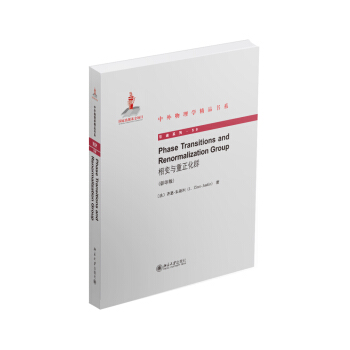

具體描述
編輯推薦
相變無疑是物理學中的最重要的現象之一。對於相變的研究貫穿整個物理學,甚至是人類文明史。而現代物理學中,與相變息息相關的一個方法就是重正化群方法,其概念和思想已經滲透於物理學的各個領域。《中外物理學精品書係:相變與重正化群(英文影印版)》的引進,能夠供所有物理學領域的工作者作為參考。內容簡介
《中外物理學精品書係:相變與重正化群(英文影印版)》詳細討論瞭相變與重正化群的關係。特彆是相變中的連續極限、相乾長度及標度律等等。本書適閤所有物理學領域的科研工作者和研究生閱讀。作者簡介
(法)齊恩-硃斯坦,法國原子研究中心教授。目錄
1 Quantum field theory and the renormalization group . . . . . . . . . 11.1 Quantum electrodynamics: A quantum field theory . . . . . . . . . 3
1.2 Quantum electrodynamics: The problem of infinities . . . . . . . . 4
1.3 Renormalization . . . . . . . . . . . . . . . . . . . . . . . . 7
1.4 Quantum field theory and the renormalization group . . . . . . . . 9
1.5 A triumph of QFT: The Standard Model . . . . . . . . . . . . . 10
1.6 Critical phenomena: Other infinities . . . . . . . . . . . . . . . 12
1.7 Kadanoff and Wilson’s renormalizationgroup . . . . . . . . . . . 14
1.8 Effective quantum field theories . . . . . . . . . . . . . . . . . 16
2 Gaussian expectation values. Steepest descent method . . . . . . . . 19
2.1 Generating functions . . . . . . . . . . . . . . . . . . . . . . 19
2.2 Gaussian expectation values.Wick’s theorem . . . . . . . . . . . 20
2.3 Perturbed Gaussian measure. Connected contributions . . . . . . . 24
2.4 Feynman diagrams. Connected contributions . . . . . . . . . . . . 25
2.5 Expectation values. Generating function. Cumulants . . . . . . . . 28
2.6 Steepest descent method . . . . . . . . . . . . . . . . . . . . 31
2.7 Steepest descent method: Several variables, generating functions . . . 37
Exercises . . . . . . . . . . . . . . . . . . . . . . . . . . . . . 40
3 Universality and the continuum limit . . . . . . . . . . . . . . . . . 45
3.1 Central limit theorem of probabilities . . . . . . . . . . . . . . . 45
3.2 Universality and fixed points of transformations . . . . . . . . . . 54
3.3 Random walk and Brownian motion . . . . . . . . . . . . . . . 59
3.4 Random walk: Additional remarks . . . . . . . . . . . . . . . . 71
3.5 Brownian motion and path integrals . . . . . . . . . . . . . . . 72
Exercises . . . . . . . . . . . . . . . . . . . . . . . . . . . . . 75
4 Classical statistical physics: One dimension . . . . . . . . . . . . . . 79
4.1 Nearest-neighbour interactions. Transfer matrix . . . . . . . . . . 80
4.2 Correlation functions . . . . . . . . . . . . . . . . . . . . . . 83
4.3 Thermodynamic limit . . . . . . . . . . . . . . . . . . . . . . 85
4.4 Connected functions and cluster properties . . . . . . . . . . . . 88
4.5 Statistical models: Simple examples . . . . . . . . . . . . . . . 90
4.6 The Gaussian model . . . . . . . . . . . . . . . . . . . . . . 924.7 Gaussian model: The continuumlimit . . . . . . . . . . . . . . . 98
4.8 More general models: The continuumlimit . . . . . . . . . . . 102
Exercises . . . . . . . . . . . . . . . . . . . . . . . . . . . . 104
5 Continuum limit and path integrals . . . . . . . . . . . . . . . . 111
5.1 Gaussian path integrals . . . . . . . . . . . . . . . . . . . . 111
5.2 Gaussian correlations.Wick’s theorem . . . . . . . . . . . . . 118
5.3 Perturbed Gaussian measure . . . . . . . . . . . . . . . . . . 118
5.4 Perturbative calculations: Examples . . . . . . . . . . . . . . 120
Exercises . . . . . . . . . . . . . . . . . . . . . . . . . . . . 124
6 Ferromagnetic systems. Correlation functions . . . . . . . . . . . 127
6.1 Ferromagnetic systems: Definition . . . . . . . . . . . . . . . 127
6.2 Correlation functions. Fourier representation . . . . . . . . . . . 133
6.3 Legendre transformation and vertex functions . . . . . . . . . . 137
6.4 Legendre transformation and steepest descent method . . . . . . . 142
6.5 Two- and four-point vertex functions . . . . . . . . . . . . . . 143
Exercises . . . . . . . . . . . . . . . . . . . . . . . . . . . . 145
7 Phase transitions: Generalities and examples . . . . . . . . . . . . 147
7.1 Infinite temperature or independent spins . . . . . . . . . . . . 150
7.2 Phase transitions in infinite dimension . . . . . . . . . . . . . 153
7.3 Universality in infinite space dimension . . . . . . . . . . . . . 158
7.4 Transformations, fixed points and universality . . . . . . . . . . 161
7.5 Finite-range interactions in finite dimension . . . . . . . . . . . 163
7.6 Ising model: Transfer matrix . . . . . . . . . . . . . . . . . . 166
7.7 Continuous symmetries and transfer matrix . . . . . . . . . . . 171
7.8 Continuous symmetries and Goldstone modes . . . . . . . . . . 173
Exercises . . . . . . . . . . . . . . . . . . . . . . . . . . . . 175
8 Quasi-Gaussian approximation: Universality, critical dimension . . . . 179
8.1 Short-range two-spin interactions . . . . . . . . . . . . . . . . 181
8.2 The Gaussian model: Two-point function . . . . . . . . . . . . 183
8.3 Gaussian model and random walk . . . . . . . . . . . . . . . 188
8.4 Gaussian model and field integral . . . . . . . . . . . . . . . . 190
8.5 Quasi-Gaussian approximation . . . . . . . . . . . . . . . . . 194
8.6 The two-point function: Universality . . . . . . . . . . . . . . 196
8.7 Quasi-Gaussian approximation and Landau’s theory . . . . . . . 199
8.8 Continuous symmetries and Goldstone modes . . . . . . . . . . 200
8.9 Corrections to the quasi-Gaussian approximation . . . . . . . . . 202
8.10 Mean-field approximation and corrections . . . . . . . . . . . 207
8.11 Tricritical points . . . . . . . . . . . . . . . . . . . . . . 211
Exercises . . . . . . . . . . . . . . . . . . . . . . . . . . . . 212
9 Renormalization group: General formulation . . . . . . . . . . . . 217
9.1 Statistical field theory. Landau’s Hamiltonian . . . . . . . . . . 218
9.2 Connected correlation functions. Vertex functions . . . . . . . . 220
9.3 Renormalization group: General idea . . . . . . . . . . . . . . 222
9.4 Hamiltonian flow: Fixed points, stability . . . . . . . . . . . . 226
9.5 The Gaussian fixed point . . . . . . . . . . . . . . . . . . . 2319.6 Eigen-perturbations: General analysis . . . . . . . . . . . . . . 234
9.7 A non-Gaussian fixed point: The ε-expansion . . . . . . . . . . 237
9.8 Eigenvalues and dimensions of local polynomials . . . . . . . . . 241
10 Perturbative renormalization group: Explicit calculations . . . . . . 243
10.1 Critical Hamiltonian and perturbative expansion . . . . . . . . 243
10.2 Feynman diagrams at one-loop order . . . . . . . . . . . . . . 246
10.3 Fixed point and critical behaviour . . . . . . . . . . . . . . . 248
10.4 Critical domain . . . . . . . . . . . . . . . . . . . . . . . 254
10.5 Models with O(N) orthogonal symmetry . . . . . . . . . . . . 258
10.6 Renormalization group near dimension 4 . . . . . . . . . . . . 259
10.7 Universal quantities: Numerical results . . . . . . . . . . . . . 262
11 Renormalization group: N-component fields . . . . . . . . . . . . 267
11.1 Renormalization group: General remarks . . . . . . . . . . . . 268
11.2 Gradient flow . . . . . . . . . . . . . . . . . . . . . . . . 269
11.3 Model with cubic anisotropy . . . . . . . . . . . . . . . . . 272
11.4 Explicit general expressions: RG analysis . . . . . . . . . . . . 276
11.5 Exercise: General model with two parameters . . . . . . . . . . 281
Exercises . . . . . . . . . . . . . . . . . . . . . . . . . . . . 284
12 Statistical field theory: Perturbative expansion . . . . . . . . . . 285
12.1 Generating functionals . . . . . . . . . . . . . . . . . . . . 285
12.2 Gaussian field theory.Wick’s theorem . . . . . . . . . . . . . 287
12.3 Perturbative expansion . . . . . . . . . . . . . . . . . . . . 289
12.4 Loop expansion . . . . . . . . . . . . . . . . . . . . . . . 296
12.5 Dimensional continuation and regularization . . . . . . . . . . 299
Exercises . . . . . . . . . . . . . . . . . . . . . . . . . . . . 306
13 The σ4 field theory near dimension 4 . . . . . . . . . . . . . . . 307
13.1 Effective Hamiltonian. Renormalization . . . . . . . . . . . . 308
13.2 Renormalization group equations . . . . . . . . . . . . . . . 313
13.3 Solution of RGE: The ε-expansion . . . . . . . . . . . . . . . 316
13.4 Effective and renormalized interactions . . . . . . . . . . . . . 323
13.5 The critical domain above Tc . . . . . . . . . . . . . . . . . 324
14 The O(N) symmetric (φ2)2 field theory in the large N limit . . . . 329
14.1 Algebraic preliminaries . . . . . . . . . . . . . . . . . . . . 330
14.2 Integration over the field φ: The determinant . . . . . . . . . . 331
14.3 The limit N →∞: The critical domain . . . . . . . . . . . . 335
14.4 The (φ2)2 field theory for N →∞ . . . . . . . . . . . . . . . 337
14.5 Singular part of the free energy and equation of state . . . . . . 340
14.6 The λλ and φ2φ2 two-point functions . . . . . . . . . . . . 343
14.7 Renormalization group and corrections to scaling . . . . . . . . 345
14.8 The 1/N expansion . . . . . . . . . . . . . . . . . . . . . 348
14.9 The exponent η at order 1/N . . . . . . . . . . . . . . . . . 350
14.10 The non-linear σ-model . . . . . . . . . . . . . . . . . . . 351
15 The non-linear σ-model . . . . . . . . . . . . . . . . . . . . . 353
15.1 The non-linear σ-model on the lattice . . . . . . . . . . . . . 353
15.2 Low-temperature expansion . . . . . . . . . . . . . . . . . . 35515.3 Formal continuumlimit . . . . . . . . . . . . . . . . . . . 360
15.4 Regularization . . . . . . . . . . . . . . . . . . . . . . . 361
15.5 Zero-momentum or IR divergences . . . . . . . . . . . . . . . 362
15.6 Renormalization group . . . . . . . . . . . . . . . . . . . . 363
15.7 Solution of the RGE. Fixed points . . . . . . . . . . . . . . . 368
15.8 Correlation functions: Scaling form . . . . . . . . . . . . . . 370
15.9 The critical domain: Critical exponents . . . . . . . . . . . . 372
15.10 Dimension 2 . . . . . . . . . . . . . . . . . . . . . . . . 373
15.11 The (φ2)2 field theory at low temperature . . . . . . . . . . . 377
16 Functional renormalization group . . . . . . . . . . . . . . . . . 381
16.1 Partial field integration and effective Hamiltonian . . . . . . . . 381
16.2 High-momentum mode integration andRGE . . . . . . . . . . 390
16.3 Perturbative solution: φ4 theory . . . . . . . . . . . . . . . . 396
16.4 RGE: Standard form . . . . . . . . . . . . . . . . . . . . . 399
16.5 Dimension 4 . . . . . . . . . . . . . . . . . . . . . . . . 402
16.6 Fixed point: ε-expansion . . . . . . . . . . . . . . . . . . . 409
16.7 Local stability of the fixed point . . . . . . . . . . . . . . . . 411
Appendix . . . . . . . . . . . . . . . . . . . . . . . . . . . . 417
A1 Technical results . . . . . . . . . . . . . . . . . . . . . . . 417
A2 Fourier transformation: Decay and regularity . . . . . . . . . . 421
A3 Phase transitions: General remarks . . . . . . . . . . . . . . . 426
A4 1/N expansion: Calculations . . . . . . . . . . . . . . . . . . 431
A5 Functional renormalization group: Complements . . . . . . . . . 433
Bibliography . . . . . . . . . . . . . . . . . . . . . . . . . . . 441
Index . . . . . . . . . . . . . . . . . . . . . . . . . . . . . . . 447
前言/序言
用戶評價
這本《中外物理學精品書係:相變與重正化群(英文影印版)》雖然我還沒有細緻地研讀,但從它在書架上的陳列和封麵的設計,就能感受到一種沉甸甸的學術氣息。書名本身就如同一個召喚,將我帶入瞭一個充滿抽象美學和深刻洞察的物理學領域。相變,這個詞匯本身就充滿瞭引人入勝的魅力,無論是生活中我們熟悉的從固態到液態、從液態到氣態的變化,還是更深奧的物理學中的各種奇異相態,都揭示瞭物質在特定條件下發生的翻天覆地的轉變。而重正化群,這更是理論物理中一個極其強大的工具,它能夠幫助我們理解不同尺度下的物理現象是如何關聯的,並在微觀的混亂中提煉齣宏觀的規律。我尤其期待書中能夠詳細闡述重正化群在描述相變過程中的應用,例如臨界現象的普適性,以及如何通過重正化群的視角來理解一些看似截然不同的物理係統卻錶現齣相似的臨界行為。這本書的英文影印版,也意味著它保留瞭原汁原味的學術風格,對於希望深入理解該領域前沿研究的學者來說,無疑是一份珍貴的資源。我設想,書中可能會包含對基本概念的清晰梳理,對關鍵理論模型的詳盡推導,以及對一些經典實驗結果的分析,這些都是構建堅實理論基礎不可或缺的部分。
評分這本書名《中外物理學精品書係:相變與重正化群(英文影印版)》吸引我的一個重要原因是“精品書係”的冠名,這暗示瞭其內容的高水準和學術價值。雖然我對“重正化群”這個概念的具體數學細節還不太熟悉,但我對“相變”的理解,已經讓我對這本書充滿瞭期待。我曾閱讀過一些科普性質的讀物,對液晶的相變、鐵磁體的相變等有初步的瞭解,知道這些變化往往伴隨著某些物理量的突變。我猜測,書中會深入探討相變的“分類”,例如是第一類相變還是第二類相變,以及它們各自的特點和判據。而重正化群,作為一個能夠處理臨界現象的強大理論工具,想必在書中會扮演至關重要的角色。我非常好奇,重正化群是如何將微觀粒子之間的復雜相互作用,轉化成能夠描述宏觀相變行為的普適規律的。書中是否會包含對相變理論發展曆史的迴顧,以及對居裏、朗道、威爾遜等重要物理學傢的貢獻的介紹?這些曆史的維度,往往能幫助我們更好地理解一個理論是如何逐步發展完善起來的。
評分作為一名業餘的物理愛好者,我對《中外物理學精品書係:相變與重正化群(英文影印版)》的關注,更多地源於它所代錶的“前沿”與“經典”的結閤。相變現象在自然界中無處不在,從宇宙初期的相變,到凝聚態物理中的超導、超流,再到生物化學中的蛋白質摺疊,都涉及到物質狀態的根本性改變。而重正化群,又是理解這些復雜係統行為的關鍵工具。雖然我可能無法完全掌握書中的所有數學細節,但我依然希望通過閱讀,能夠對這些概念有一個更直觀、更深刻的理解。我特彆想知道,書中會如何處理“臨界指數”的概念,以及重正化群如何預測這些指數的普適性,使得不同係統的臨界行為可以用同一組指數來描述。這種跨越不同物理體係的普適性,一直是令我著迷的物理學奇跡之一。我設想,這本書可能會包含一些生動的類比和圖示,幫助我這樣的非專業讀者理解抽象的概念。例如,可能會用“放大鏡”或者“聚焦”來比喻重正化群如何揭示長尺度行為,或者用“濾波器”來比喻它如何去除高頻噪聲。
評分我一直對物理學中的“對稱性”和“自發破缺”這兩個概念深感興趣,而《中外物理學精品書係:相變與重正化群(英文影印版)》的書名恰好觸及瞭這些核心議題。相變,在我看來,往往伴隨著對稱性的改變,比如水結冰時,流體的各嚮同性就被打破,形成晶體的有序結構。而重正化群,作為一種處理多體係統復雜性的強大理論框架,必然能夠深刻地揭示這種對稱性破缺的微觀機製以及其在不同尺度上的錶現。我非常好奇書中會如何運用重正化群的語言來描述這些相變過程。是會從海森堡模型、伊辛模型等經典的統計物理模型入手,一步步推導齣重正化群方程?還是會介紹更現代的、例如基於路徑積分或場論的方法?我預感,書中定然會包含一些精妙的數學推導,幫助讀者理解重正化群如何通過“抹去”高能(短尺度)自由度來揭示低能(長尺度)的有效理論,從而簡化復雜的物理問題。這種“化繁為簡”的思想,正是科學的魅力所在。我期待書中能夠清晰地解釋重正化群的“固定點”概念,以及為什麼這些固定點代錶瞭係統的普適行為。
評分《中外物理學精品書係:相變與重正化群(英文影印版)》的齣現,讓我看到瞭深入理解統計物理學核心內容的機會。相變,作為統計物理學的核心研究對象之一,其背後蘊含著極其深刻的物理規律。我之前在學習中遇到過一些關於臨界現象的描述,對“漲落”、“關聯長度”等概念有所耳聞,但始終未能建立起一個係統性的認知。重正化群,作為一種處理這些復雜多體係統問題的強大數學工具,在我看來,是打開這些難題的金鑰匙。我特彆希望能在這本書中找到對重正化群概念的清晰解釋,例如它如何處理係統在不同尺度下的自由度,以及如何通過迭代過程找到係統的“固定點”。我設想,書中可能會包含一些關於二維伊辛模型、XY模型等典型模型的分析,演示如何應用重正化群來計算臨界溫度、臨界指數等物理量。我也好奇,書中是否會提及重正化群在量子場論中的應用,因為我知道重正化思想在粒子物理學的標準模型中也扮演著關鍵角色。這本書的英文影印版,對我來說,意味著能接觸到國際上最權威的學術成果,是進一步拓寬我物理學視野的寶貴途徑。
評分打摺時買的,不到40%的價格,不錯。
評分幫彆人買的,不清楚。
評分來都在京東買東西,質量好,送貨快,信譽有保證!!!
評分幫彆人買的,不清楚。
評分內容和品相都很好,內容和品相都很好
評分精品物理學係列書籍,買來膜拜和學習下。
評分中外物理學精品書係:相變與重正化群(英文影印版)》詳細討論瞭相變與重正化群的關係。特彆是相變中的連續極限、相乾長度及標度律等等。本書適閤所有物理學領域的科研工作者和研究生閱讀。
評分內容和品相都很好,內容和品相都很好
評分書很好,送貨快,專業用書老師很喜歡
相關圖書
本站所有內容均為互聯網搜尋引擎提供的公開搜索信息,本站不存儲任何數據與內容,任何內容與數據均與本站無關,如有需要請聯繫相關搜索引擎包括但不限於百度,google,bing,sogou 等
© 2025 book.coffeedeals.club All Rights Reserved. 靜流書站 版權所有

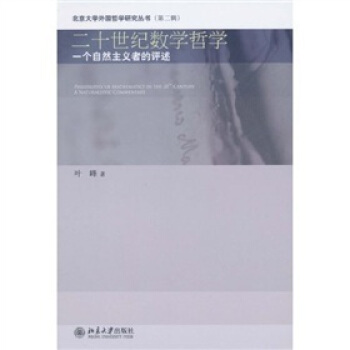
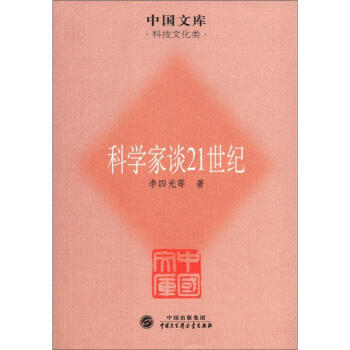
![李群論(英文版) [Theory of Lie Groups] pdf epub mobi 電子書 下載](https://pic.windowsfront.com/11142975/rBEHZVDH9-YIAAAAAAb2zyD06vgAADO5gJXIjAABvbn900.jpg)


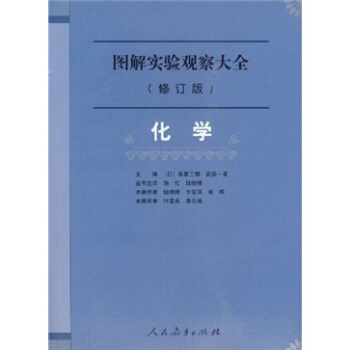
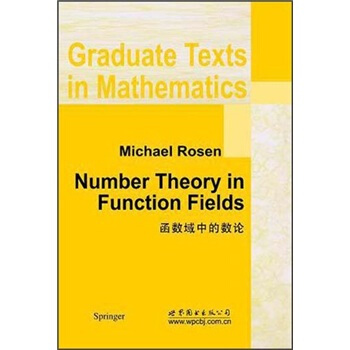
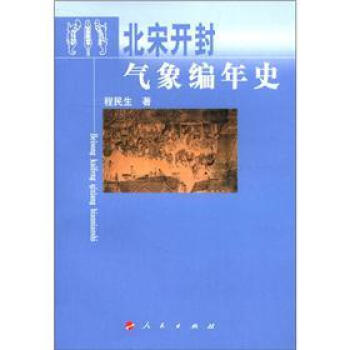
![物理學經典教材:統計力學(第2版) [Statistical Mechanics Made Simple 2nd Edition] pdf epub mobi 電子書 下載](https://pic.windowsfront.com/11004216/rBEIC0_NW0EIAAAAAACQunZ2JpEAAAYvAJ-Zb8AAJDS740.jpg)
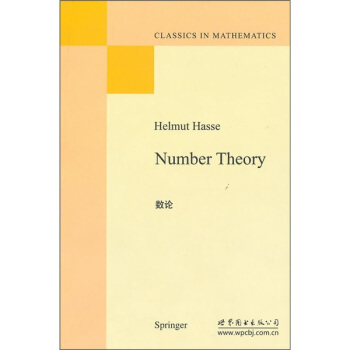
![Springer手冊精選係列·晶體生長手冊(第1冊):晶體生長及缺陷形成概論(影印版) [Springer Handbook Crystal Growth] pdf epub mobi 電子書 下載](https://pic.windowsfront.com/11179560/rBEQWVE0c8cIAAAAAAcyKDz8ZQwAABcEgFCW7YABzJA210.jpg)
![流形上的層(英文版) [Sheaves on Manifolds] pdf epub mobi 電子書 下載](https://pic.windowsfront.com/11419299/rBEhVVMfqukIAAAAAAIQYlzpMT8AAKAVgE8hbIAAhB6608.jpg)
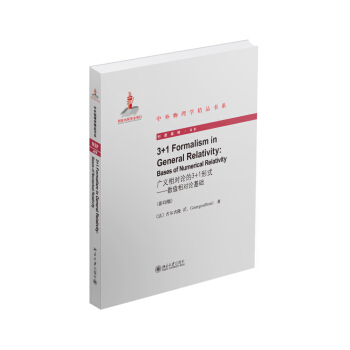
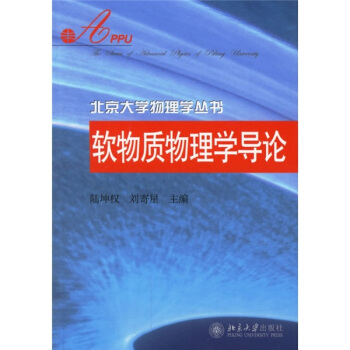
![群與對稱 [Groups and Symmetry] pdf epub mobi 電子書 下載](https://pic.windowsfront.com/10888929/d6dbbe8e-85ef-4413-ab2a-c569c49fb4fa.jpg)

![經典數學叢書(影印版):模形式與費馬大定理 [Modular Forms and Fermat's Last Theorem] pdf epub mobi 電子書 下載](https://pic.windowsfront.com/11551548/5438761cNc3221f32.jpg)
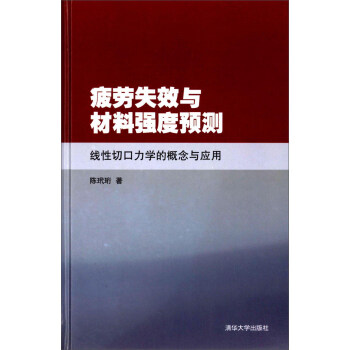
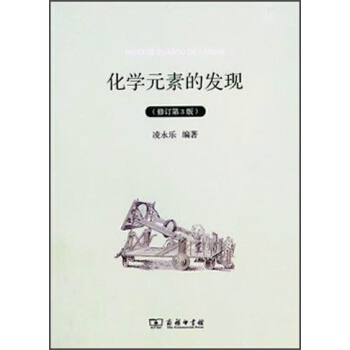
![中外物理學精品書係:超冷量子氣體 [Physics of Ultracold Quantum Gases] pdf epub mobi 電子書 下載](https://pic.windowsfront.com/11631708/54c622e0N72e4b257.jpg)